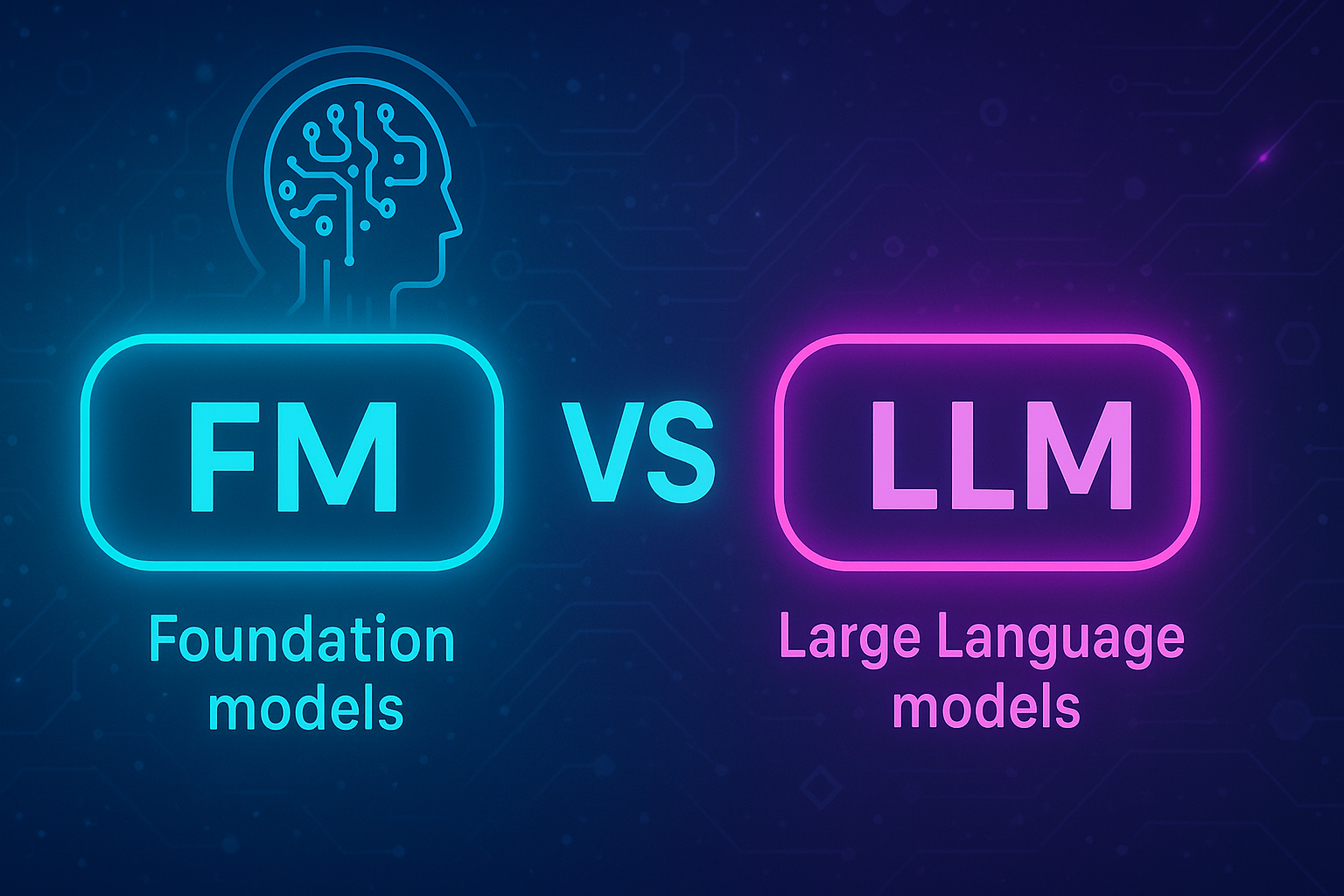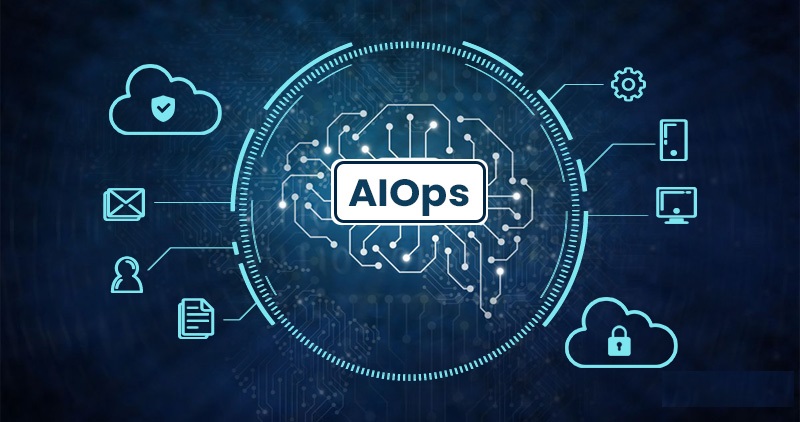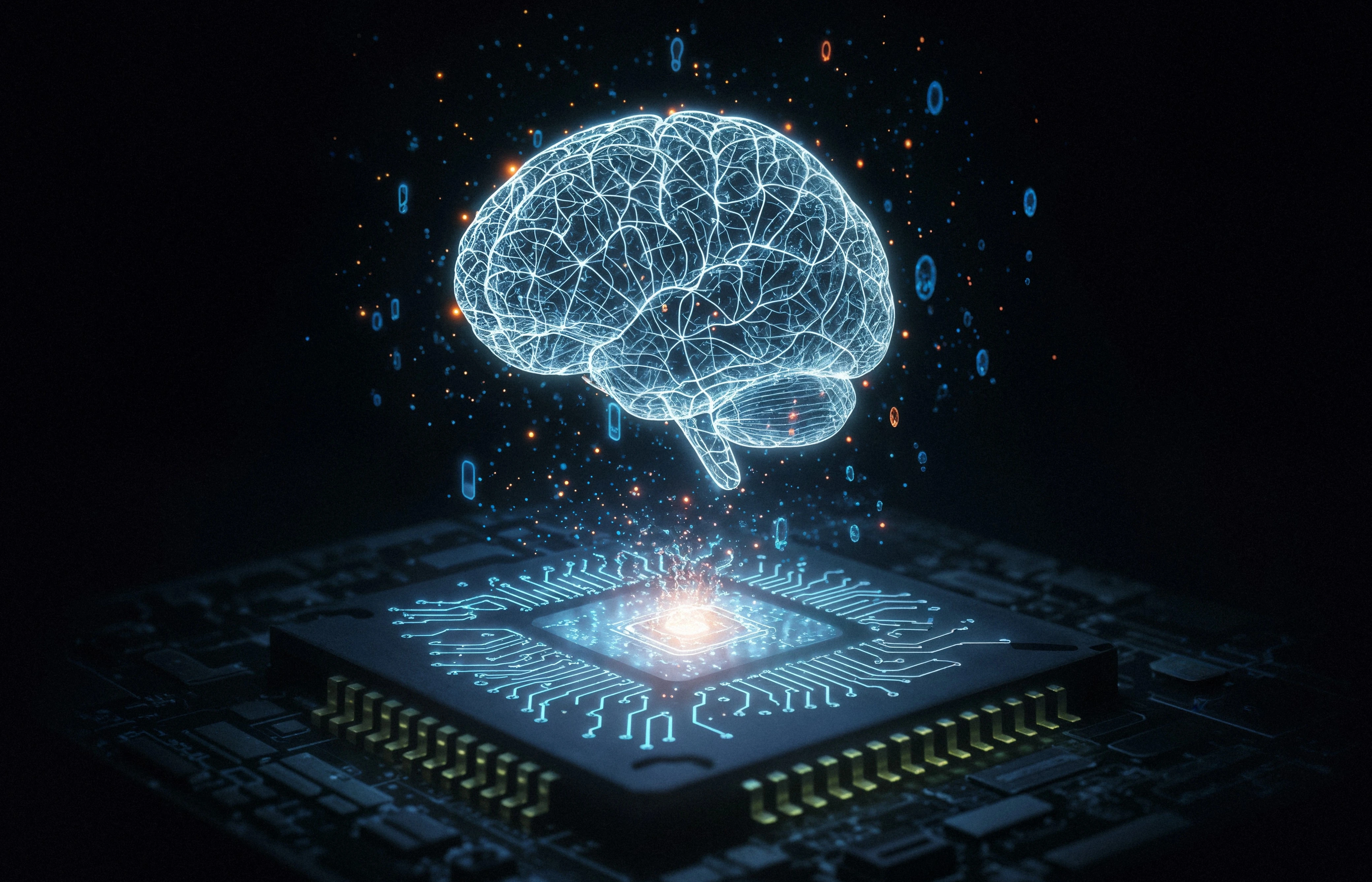FMOps vs. LLMOps: Revolutionizing AI Deployment on Cloud Platforms Across Industries

Table of Contents
The rapid adoption of Foundation Models and Large Language Models (FMs/LLMs) have changed the creation of AI applications for enterprise. But running these models at scale in production – at big, reliable & efficient – features is a hard, unsolved problem which only special operational frameworks can solve. Two key paradigms have emerged: FMOps (Foundation Model Operations) for operationalizing Foundation Models (such as GPT, BERT, DALL-E) and LLMOps (Large Language Model Operations) specifically for LLMs like GPT-4, Claude and Llama. This blog explores how these frameworks improve AI deployment on cloud platforms, their differences, and real-world applications across industries.
Understanding FMOps and LLMOps
The operational challenges of modern AI models require specialized approaches beyond traditional MLOps.
1. What is FMOps?
FMOps - management (deployment, monitoring, fine-tuning, governance, etc.) of the lifecycle of base model. These models are the workhorses for many AI applications, everything from computer vision to natural language processing (NLP).
Key Components of FMOps:
- Deployment & Scalability – Ensuring real-time efficiency on the cloud (AWS, GCP, Azure)
- Continuous Monitoring - Monitoring performance, drift, bias
- Task-Specific Optimization – Customizing models to solution space requirements
- Optimize Cost/Resource – Manage GPU/TPU well
- Security & Compliance – For upholding data privacy and regulations
2. What is LLMOps?
LLMOps is a specialized branch of FMOps that deals exclusively with large language models (LLMs). Since LLMs have unique challenges—such as hallucination, prompt engineering, and high computational costs—LLMOps introduces tailored solutions.
Key Components of LLMOps:
- Prompt Engineering & Optimization – Crafting effective inputs for desired outputs
- Retrieval-Augmented Generation (RAG) – Enhancing LLMs with external knowledge
- Hallucination Mitigation – Reducing false or misleading outputs
- Fine-tuning for Domain-Specific Applications – Adapting LLMs to industries such as Healthcare or Legal
- API & Pipeline Management - Efficiently managing high volume LLM API calls
FMOps vs. LLMOps: Are They Different or the Same?
While FMOps and LLMOps share similarities, they differ in focus and implementation:
| Aspect | FMOps | LLMOps |
|---|---|---|
| Scope | Broad (all foundational models) | Narrow (only LLMs) |
| Key Challenges | Model drift, scalability, multi-modal deployment | Prompt engineering, hallucination, context management |
| Fine-tuning Approach | Full retraining, adapter-based methods | LoRA, P-tuning, RLHF |
| Deployment Focus | Batch & real-time inference | Real-time chat, RAG systems |
| Industries | Healthcare, manufacturing, finance | Customer support, legal, content generation |
Comparison between FMOps and LLMOps
Key Takeaways:
- FMOps is a superset that includes LLMOps
- LLMOps is more specialized, addressing unique LLM challenges like prompt engineering and hallucination
How FMOps Adds Value Over Traditional AI Deployment
Traditional AI model deployment follows a static pipeline: Train a model, deploy it, and rarely update unless major issues arise. FMOps revolutionizes this approach by:
1. Continuous Model Improvement
- Automated retraining when data drift occurs
- A/B testing different model versions in production
Example: A financial fraud detection model continuously adapts to new fraud patterns instead of becoming outdated.
2. Cost-Efficient Scaling
- Dynamic cloud resource allocation (serverless inference, spot instances)
- Quantization & distillation to reduce model size without losing accuracy
Example: A recommendation engine to elastically scale during the peak shopping (Black Friday) without over-provisioning.
3. Enhanced Monitoring & Governance
- Real-time bias detection in hiring models
- Explainability tools for regulatory compliance (GDPR, HIPAA)
Example: Bias monitoring of a healthcare diagnostic model over population subgroups.
4. Multi-Model Orchestration
- Combining vision, text, and speech models in a single workflow
Example: An autonomous vehicle system integrates object detection (CV) with NLP for voice commands.
Industry-Specific Applications of FMOps & LLMOps
These operational frameworks are being applied across various industries to solve domain-specific challenges:
1. Healthcare
- FMOps: Medical imaging models (MRI, X-ray analysis) deployed on cloud with continuous validation
- LLMOps: AI-powered diagnostics chatbots fine-tuned on medical literature
2. Finance
- FMOps: Fraud detection models updated in real-time with transaction data
- LLMOps: Automated financial report generation using GPT-4 + RAG
3. Retail & E-Commerce
- FMOps: Personalized recommendation engines (dynamic A/B testing)
- LLMOps: AI shopping assistants with natural language search
4. Legal & Compliance
- LLMOps: Contract review automation using fine-tuned LLMs
- Regulatory compliance checks via NLP
5. Manufacturing
- FMOps: Predictive maintenance models analyzing IoT sensor data
Future Trends & Best Practices
As FMOps and LLMOps continue to evolve, several trends and best practices are emerging:
1. Emerging Trends
- Smaller, narrower models (e.g., TinyBERT) cutting down cloud expenditure
- AI ethical deployment governance frameworks
- Federated learning for privacy-preserving FMOps
2. Best Practices for Implementing FMOps/LLMOps
- Start with MLOps maturity before adopting FMOps
- Leverage cloud-native tools (AWS SageMaker, Azure ML, VertexAI)
- They follow both performance and ethics (bias, hallucination)
- Optimize prompts & fine-tuning for LLMOps
Conclusion
FMOps and LLMOps mark the next stage of AI deployment by transcending conventional MLOps to address the intricacies surrounding foundational models and LLMs. FMOps offers a general framework for underlying model, but LLMOps focuses on enabling language models to achieve a better balance among accuracy, efficiency and scalability.
These methods are already heavily employed in health care, finance and other industries to increase automation, save money and make better decisions. The requirement to keep a balance of these forces will be even more necessary as AI matures.
About the Author
Arbind is a leading researcher in technology and innovation. With extensive experience in cloud architecture, AI integration, and modern development practices, our team continues to push the boundaries of what's possible in technology.

